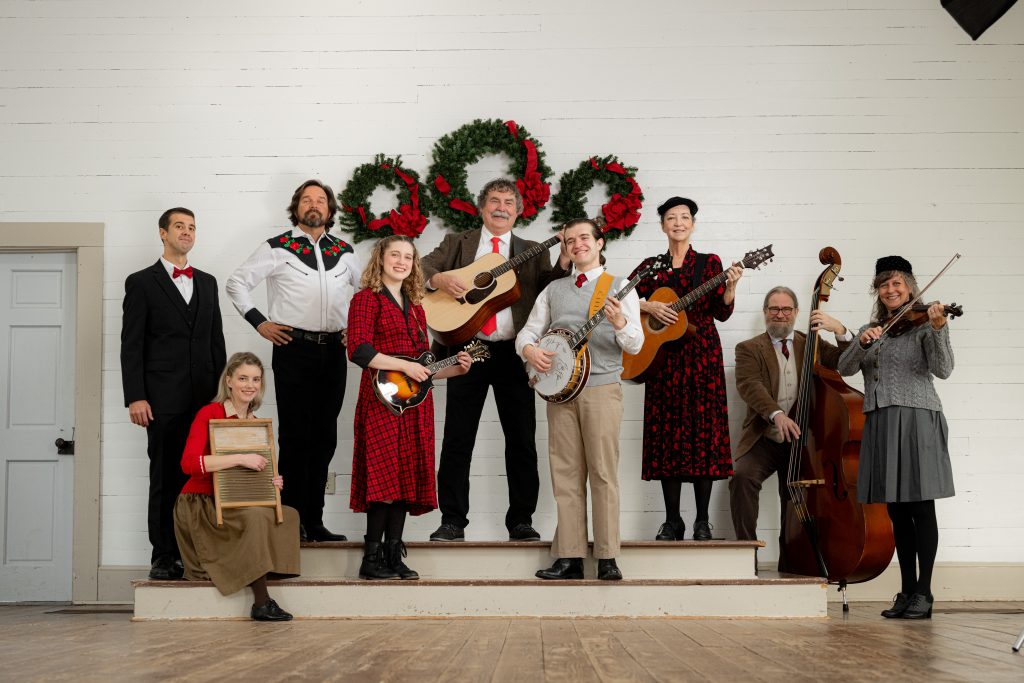Sacred Harp Singing in the Old Country Church

- This event has passed.
Sacred Harp Singing in the Old Country Church
May 4, 2024 @ 9:30 am - 2:30 pm
Event Navigation

Sacred Harp is a uniquely American tradition that brings communities together to sing four-part hymns and anthems. It is a proudly inclusive and democratic part of our shared cultural heritage.
Participants are not concerned with re-creating or re-enacting historical events. Our tradition is a living, breathing, ongoing practice passed directly to us by generations of singers, many gone on before and many still living.
All events welcome beginners and newcomers, with no musical experience or religious affiliation required — in fact, the tradition was born from colonial “singing schools” whose purpose was to teach beginners to sing and our methods continue to reflect this goal. Though Sacred Harp is not affiliated with any denomination, it is a deeply spiritual experience for all involved, and functions as a religious observance for many singers.
Sacred Harp “singings” are not performances. There are no rehearsals and no separate seats for an audience. Every singing is a unique and self-sufficient event with a different group of assembled participants. The singers sit in a hollow square formation with one voice part on each side, all facing inwards so we can see and hear each other. However, visitors are always welcome to sit anywhere in the room and participate as listeners.
Why is it called “Sacred Harp”?
Technically, our style of singing is “shape note singing” because the musical notation uses note heads in 4 distinct shapes to aid in sight-reading, but it is often called “Sacred Harp” singing because the books that most singers use today are called “The Sacred Harp,” with the most prominent of these being the 1991 Denson edition. The term “sacred harp” refers to the human voice — that is, the musical instrument you were given at birth.
In 1844, The Sacred Harp was just one of more than 100 oblong hymn books published in the U.S. It has been continuously updated ever since. Along with other hymn books from the era, a handful of which are also still published and used, its repertoire of over 500 4-part a cappella hymns, odes, and anthems is part of the foundation of our vibrant oral tradition. There are dozens of living composers still actively writing new tunes within the traditional styles and shape note format. Other shape note books still in use today include Christian Harmony (using a 7-shape notation), New Harp of Columbia, plus several others, including some entirely new collections such as Northern Harmony.
Who sings Sacred Harp music? What does it sound like?
The best way to learn about Sacred Harp singing is to sing it yourself by attending annual or local singings. See our Singings page for all the details, and visit our Resources page to download an excellent Beginner Guide, or to learn where to find a wide variety of recordings.
Or, you can listen to these radio shows featuring a singing in Henagar, Alabama or this one in Minnesota. (More articles like this can be found on the Press page.)
You can hear more singing by listening to these recordings made at a singing in Ider, Alabama. (More web sites like this one can be found listed on the Links page. More recordings can be found by visiting our Resources page.)
Where can I learn more?
Wikipedia has the most comprehensive overview of Sacred Harp. The article there also contains an excellent bibliography and list of external links.



